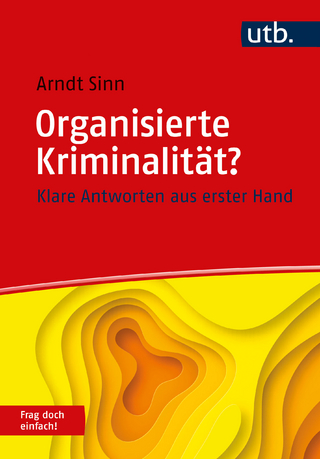
Decoding Terrorism
An Interdisciplinary Approach to a Lone-Actor Case
Seiten
2024
Cambridge University Press (Verlag)
978-1-009-49574-5 (ISBN)
Cambridge University Press (Verlag)
978-1-009-49574-5 (ISBN)
- Noch nicht erschienen (ca. Dezember 2024)
- Versandkostenfrei
- Auch auf Rechnung
- Artikel merken
This Element is an interdisciplinary analysis of language evidence from a lone-actor terrorism attack in Halle, Germany, involving Stephan Balliet. It uses a multi-method approach, including genre, text linguistics, appraisal, and uptake, to elucidate data and provide a review of the assailant's background, warning behaviors, and red flags.
This Element is an interdisciplinary analysis of the language evidence produced before, during and following a lone-actor terrorism attack in Halle, Germany, on October 9, 2019, resulting in two casualties. During his final preparations, the perpetrator, twenty-seven-year-old Stephan Balliet, announced his attack online and disseminated a targeted violence manifesto shortly before live-streaming his violent act. This post-hoc investigation introduces a multi-method approach that synchronizes well-established qualitative methodologies for forensic text analysis – genre, text linguistics, appraisal and uptake – to elucidate these data types. Furthermore, a retroactive threat assessment based on language data from the trial transcripts provides a holistic review of the assailant's background, red flags, triggering events and warning behaviors that could have signaled his movements along the pathway to violence. The results are considered in an organizational context to highlight current challenges faced by security agencies when mitigating the risk of lone-actors who radicalize in online environments.
This Element is an interdisciplinary analysis of the language evidence produced before, during and following a lone-actor terrorism attack in Halle, Germany, on October 9, 2019, resulting in two casualties. During his final preparations, the perpetrator, twenty-seven-year-old Stephan Balliet, announced his attack online and disseminated a targeted violence manifesto shortly before live-streaming his violent act. This post-hoc investigation introduces a multi-method approach that synchronizes well-established qualitative methodologies for forensic text analysis – genre, text linguistics, appraisal and uptake – to elucidate these data types. Furthermore, a retroactive threat assessment based on language data from the trial transcripts provides a holistic review of the assailant's background, red flags, triggering events and warning behaviors that could have signaled his movements along the pathway to violence. The results are considered in an organizational context to highlight current challenges faced by security agencies when mitigating the risk of lone-actors who radicalize in online environments.
Prologue: online radicalization; 1. Introduction; 2. Methodology; 3. Rhetorical genre analysis; 4. Text linguistic analysis; 5. Stance analysis; 6. Retrospective threat assessment; 7. Lone-actor investigative challenges; 8. Contagion and copycat uptakes; Discussion; References.
| Erscheint lt. Verlag | 31.12.2024 |
|---|---|
| Reihe/Serie | Elements in Forensic Linguistics |
| Zusatzinfo | Worked examples or Exercises |
| Verlagsort | Cambridge |
| Sprache | englisch |
| Themenwelt | Geisteswissenschaften ► Psychologie |
| Recht / Steuern ► Strafrecht ► Kriminologie | |
| Sozialwissenschaften ► Politik / Verwaltung | |
| ISBN-10 | 1-009-49574-7 / 1009495747 |
| ISBN-13 | 978-1-009-49574-5 / 9781009495745 |
| Zustand | Neuware |
| Haben Sie eine Frage zum Produkt? |
Mehr entdecken
aus dem Bereich
aus dem Bereich
klare Antworten aus erster Hand
Buch | Softcover (2023)
UTB (Verlag)
CHF 27,85


